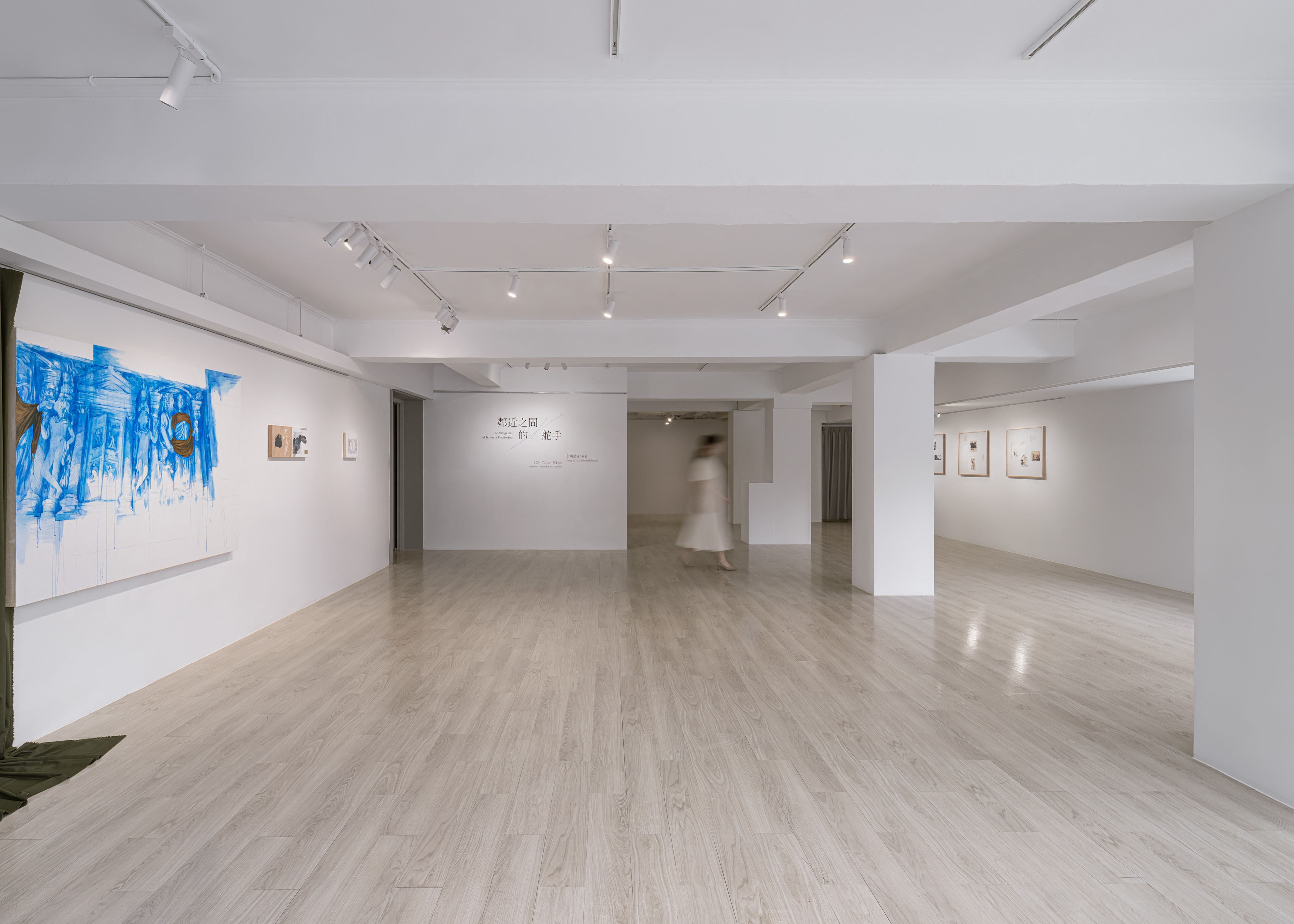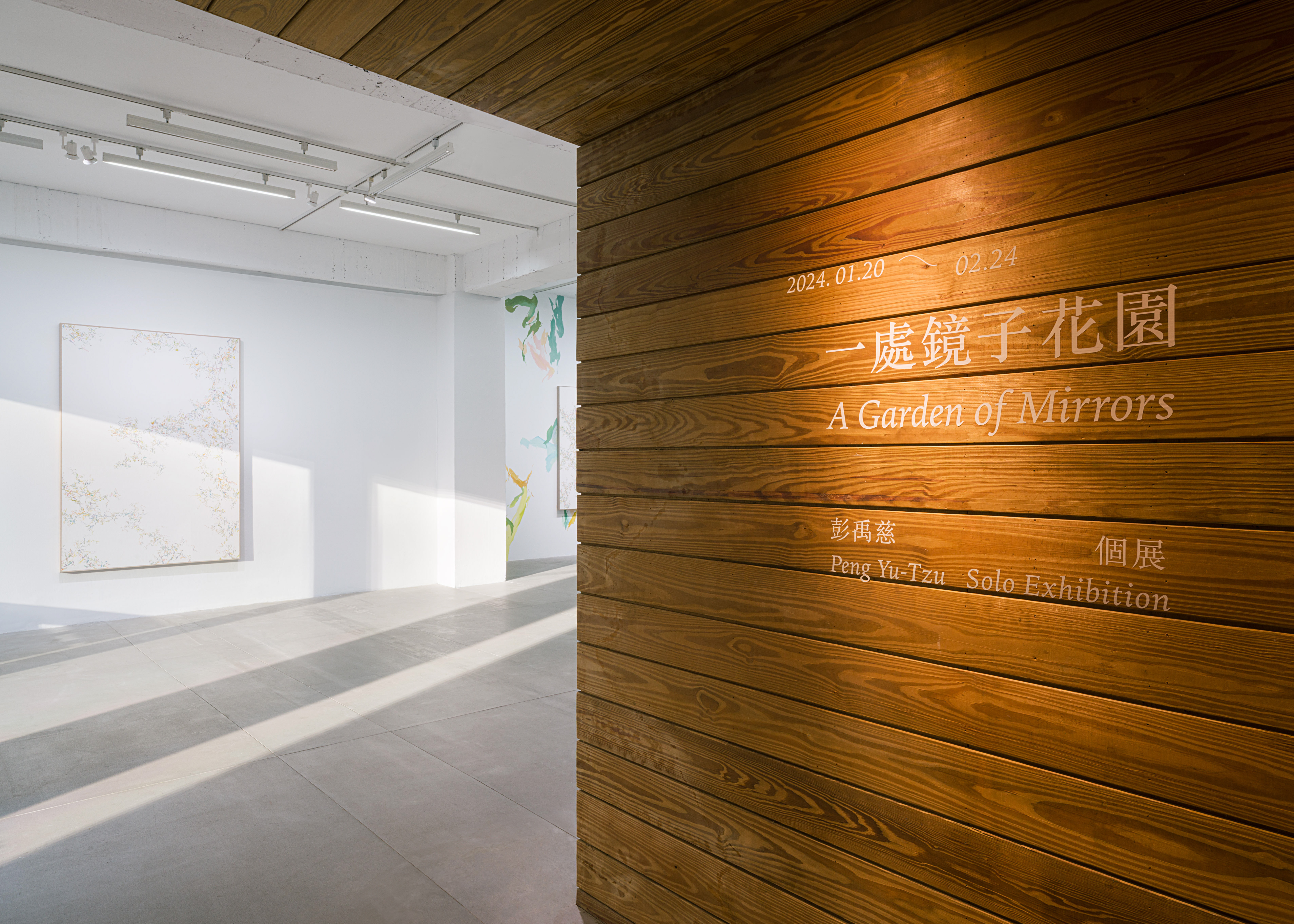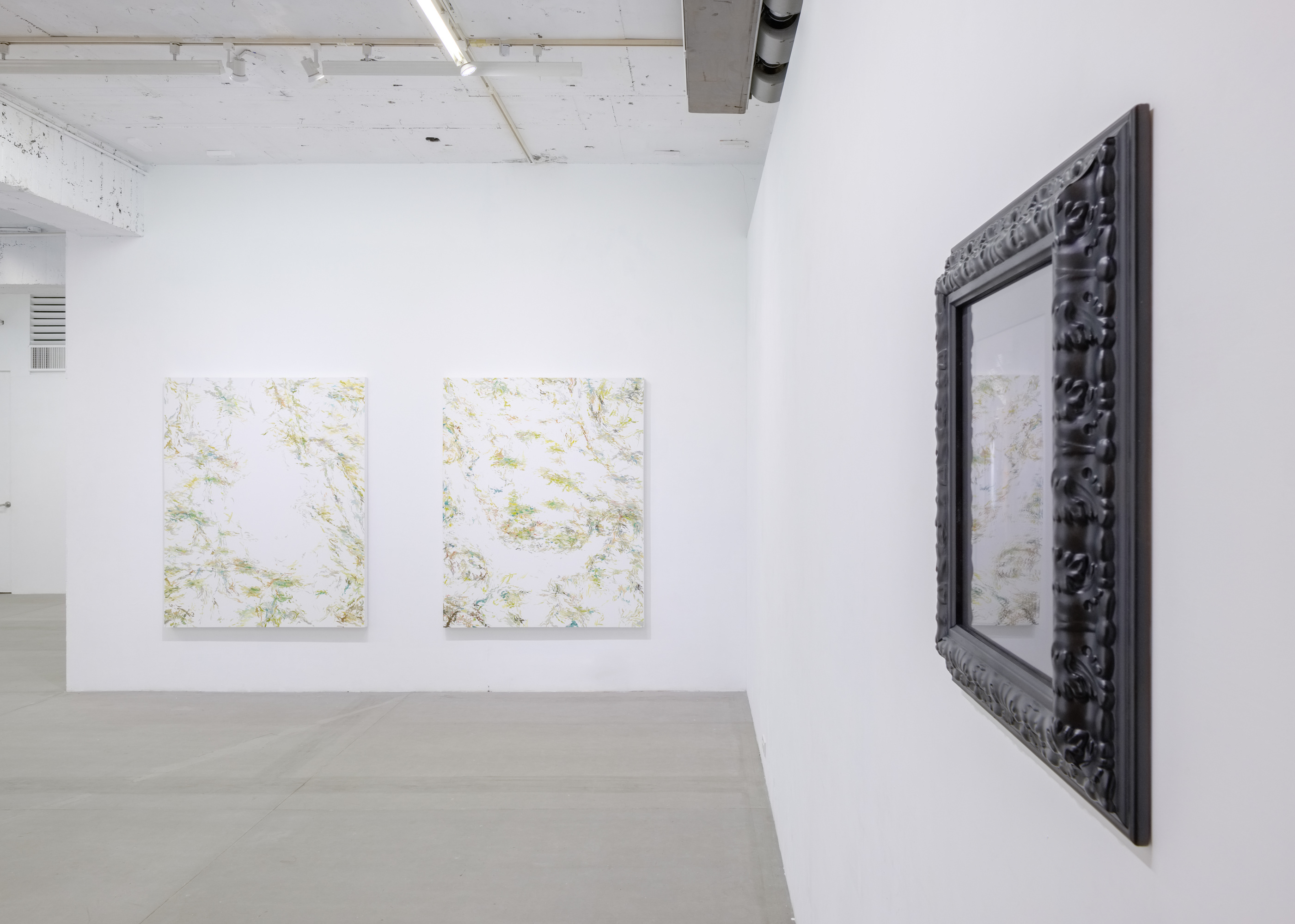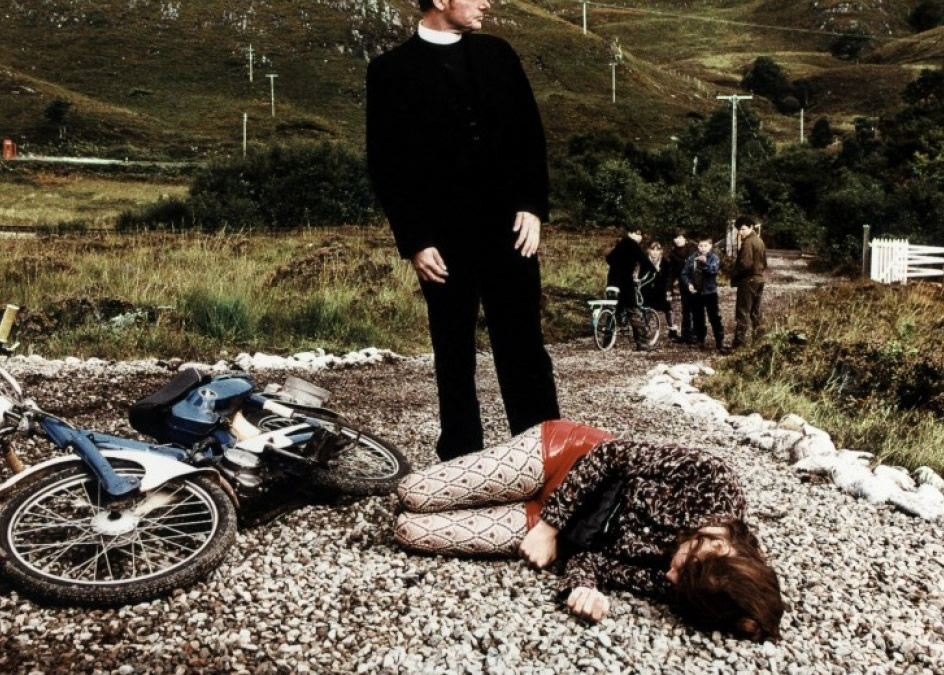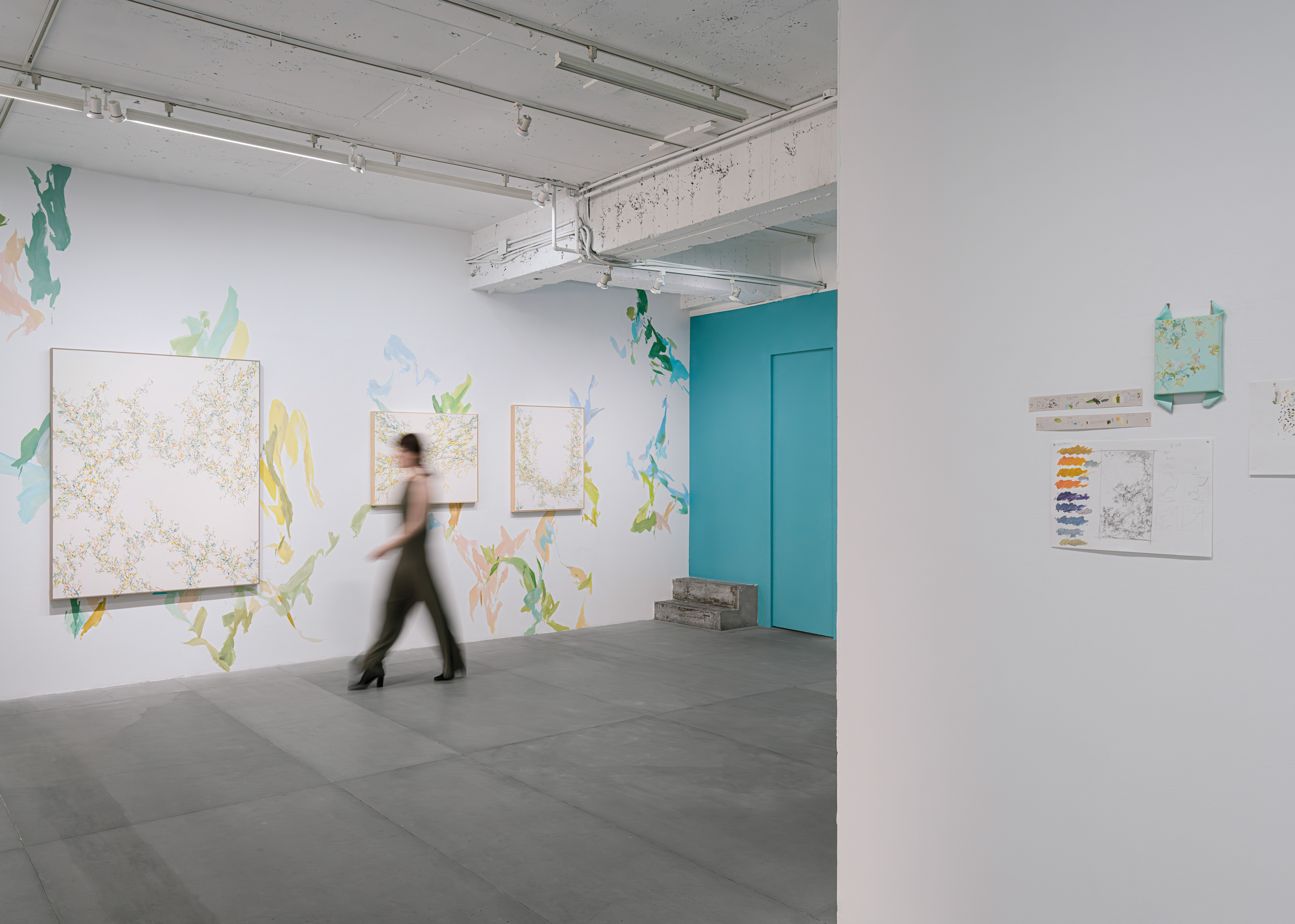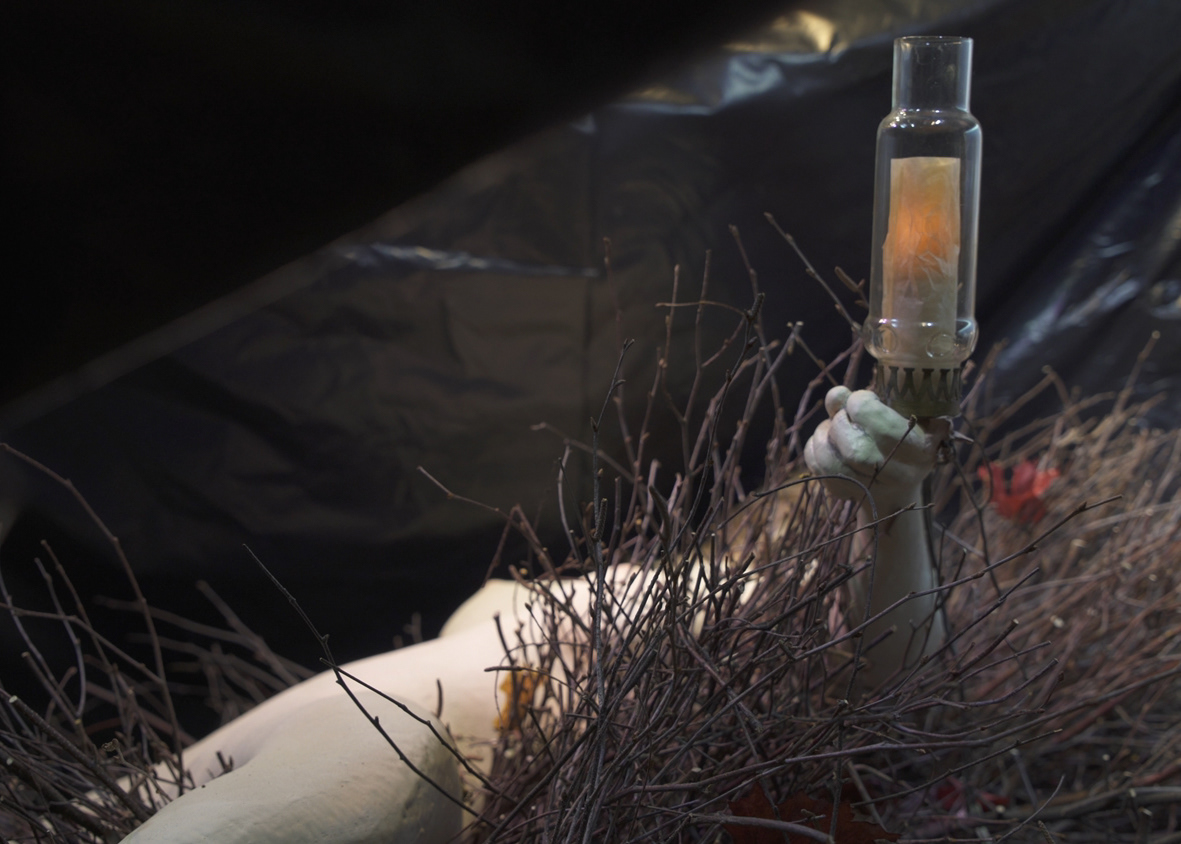創作論述
文|彭禹慈
文字是由書寫的召喚為己重覆,換言之,繪畫是由顏料的部署為以重覆,而繪畫必須指向顏料存在,但繪畫存在是指向它自身。
『自相似性』,自我凹折,而又重回過頭來看,無窮的放大,都會看到同樣的東西,每個細節卻都是它自身,如同語言的功能,自我奠定的雙重性,再現了再現,才再現的對象,使再現時被重覆。然而破碎本身並不是消極的,反而是可以擁有積極的意涵,像是將其繪畫構成進行解構後,他失去了辨別的優勢,逐漸變得模糊,而作為結構而存在的屬性卻又簡潔的標註它們的狀態,模糊的只是它的維持而非手段。解構而重建作為創作方式,從另一個極限形式到另一個極限形式,以便完成自我轉型繪畫語言構成,以一個風格化的方式活著,而活著就是對其刻板印象的破壞,而自己似乎也可以感到著迷以及需求感。
白色是一項能切實並深刻揭露繪畫真相的創作方式,至關任何的瑕疵都會引起注意,而碎形出於清晰,而負載著質地,而作為繪畫構成基礎,它同時也負載了強化。
1.像往常一樣,我走進了工作室,對此,我跟它都是佔據了一個空間,體驗到一種愉悅。
2 . 突然意識到,或許我一直在做某一種魅像,摸不著邊際,或者是一種氣候,確切地說,細微的、騷動的被放置在所欲之處,使之映照在此,而這些差異自行成了一個氣候,完全不遵循且停留在自己的空間深度裡。
3 . 重建的方式,是阻擋不了運動的產生,就像遊牧的狀態,對我而言像是一個散文的寫作者,不同於隨筆的散漫思考,也不是盲目的,很自動進行的,而是不斷提醒自我現在身處的狀態,在失序中建立自己的秩序。
4 . 像是在音樂中,出現的不會是別的,是聲音,有記譜的以及未記譜的聲音,那些未記譜的聲音,以一種靜默的方式出現在樂譜中,並敞開,這種開放一直存在,而且這世界上並不存在閒置的空間跟空閑的時間,總有些東西能讓人去停留、聆聽。(約翰凱吉的沉默)
5 . 『我會把時間空出來的。』我這麼回答。
Artist Statement. Peng,Yu-Tzu
Just as the repetition of words is to answer the call to writing, the distribution and repetition of pigments also bring paintings to life. Though the existence of pigments underlies the presence of paintings, paintings exist for themselves.
"Self-resemblance" comes from folding – when something is folded, it gets to see its other end, and when it is constantly zoomed in to be examined, the same elements of that thing will repeatedly show up again and again. Every detailed part of it is the epitome of its whole self. This is the same as languages that have a duality within themselves. After the representation is recreated, the new creation makes reproduction once again doable.
However, fragmentation does not necessarily need to be negative; instead, it can have positive connotations. For example, after deconstructing a piece of painting, each of its elements may lose their edge, which is to be identifiable, and gradually becomes blurred, but the attributes of these elements that exist as structures succinctly mark their states. What is blurred, at the end, is not the outcome of certain approaches but a status quo that is maintained. Reconstruction after deconstruction, which goes from one extreme of the spectrum to the other, is a way to create art that can complete the self-transformation of pictorial language, a way to live and exist in a stylised way. In fact, to live and exist is a means to destroy existing stereotypes, and it makes one feel obsessed and that they’re being needed.
White, a distinctive element in artworks, is able to precisely and insightfully reveal the true state of paintings, as every flaw is then subject to catch viewer’s attention. Fragmented images come from clear ones and carry textures within themselves, so they underlie and also fortify paintings.
1. As usual, I walked into the studio, and I occupied a space in it, just like how it occupies a space in this world. This gives me some pleasure.
2. It suddenly dawned on me that perhaps what I have been creating is some kind of intangible, ghost-like images, or an atmosphere, rather. Subtle, tumultuous things were placed where I wanted them, so that they were reflected here and there – and these differences created an atmosphere in their own right. They didn’t follow any rules but stayed deep in their own space.
3. Reconstruction always comes with movement, just like being in the nomadic state. For me it is like a prose writer, whose writing process is different from those who work on random essays because reconstruction does not start blindly, nor automatically; instead, it is constantly aware of the state in which it is now, establishing its own order in disorder.
4. For example, in music, there will be no other elements but sounds, notated and unnotated sounds. Those unnotated sounds appear in the score in a silent way and stay open. This openness has always been there, and there is no such thing as idle spaces and free time in this world, as there is always something to stay on and listen to. (Silence by John Cagee)
5. "I'll free up time." I replied.
Translated by RYE LIN ART & Translation
